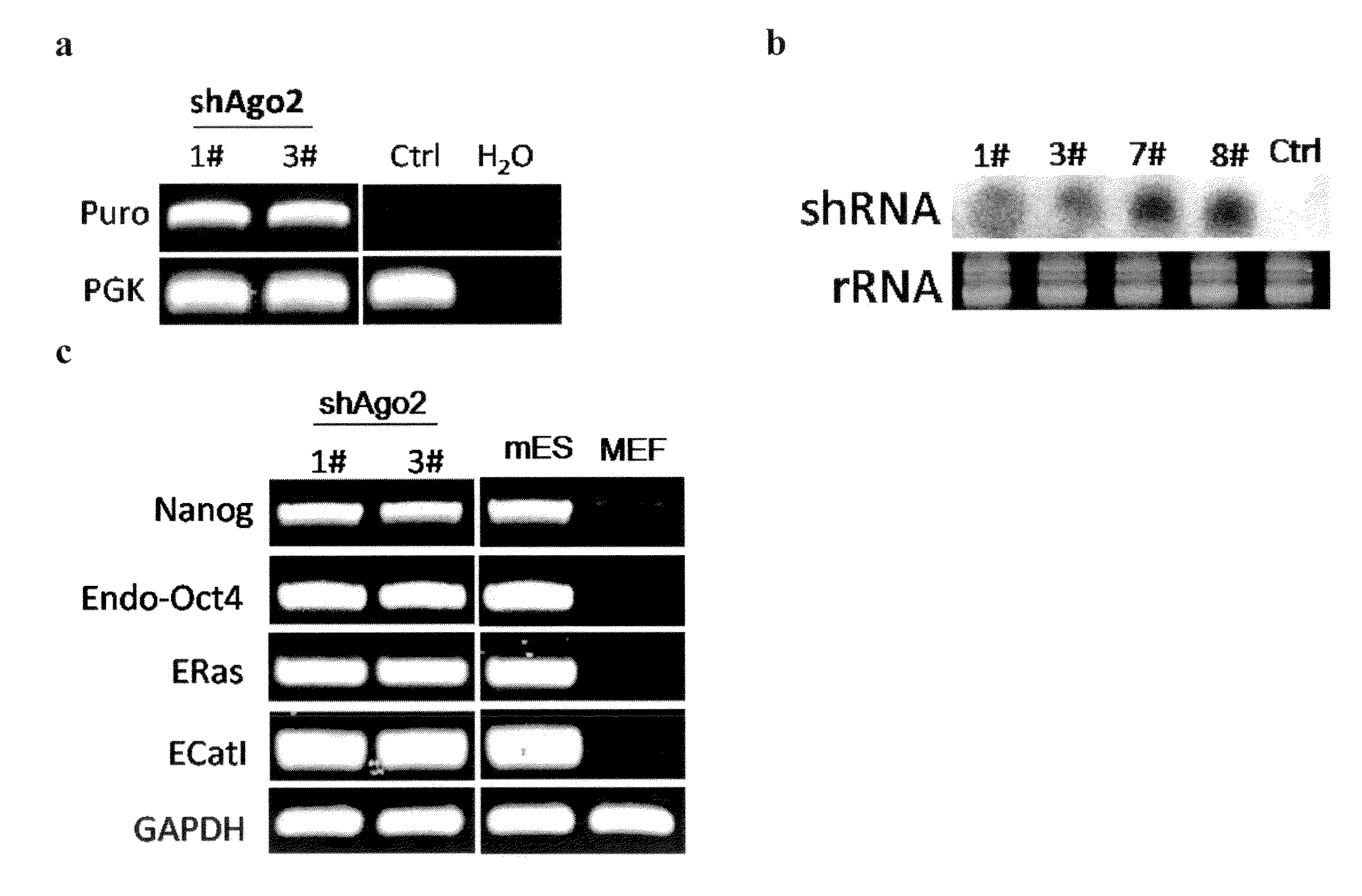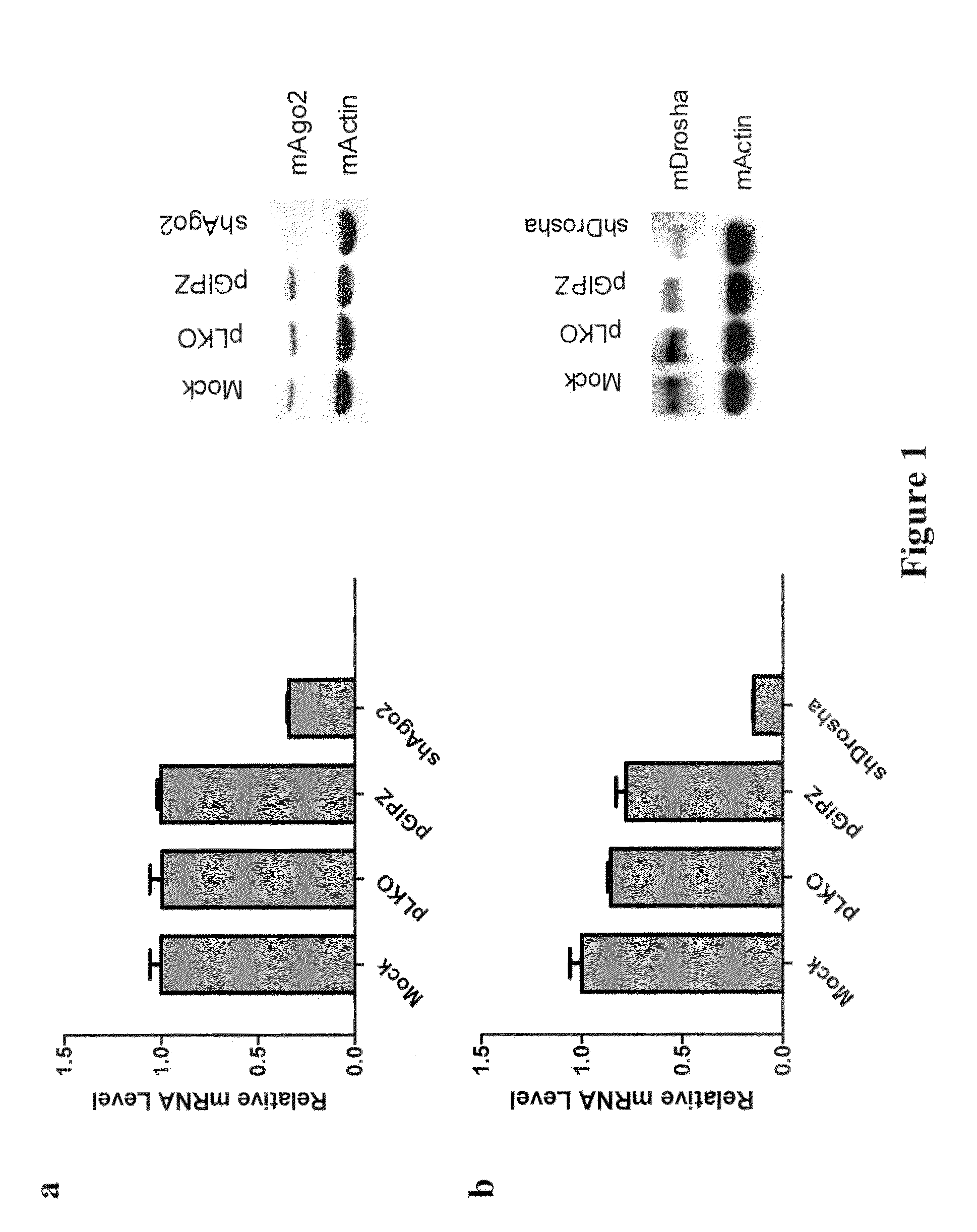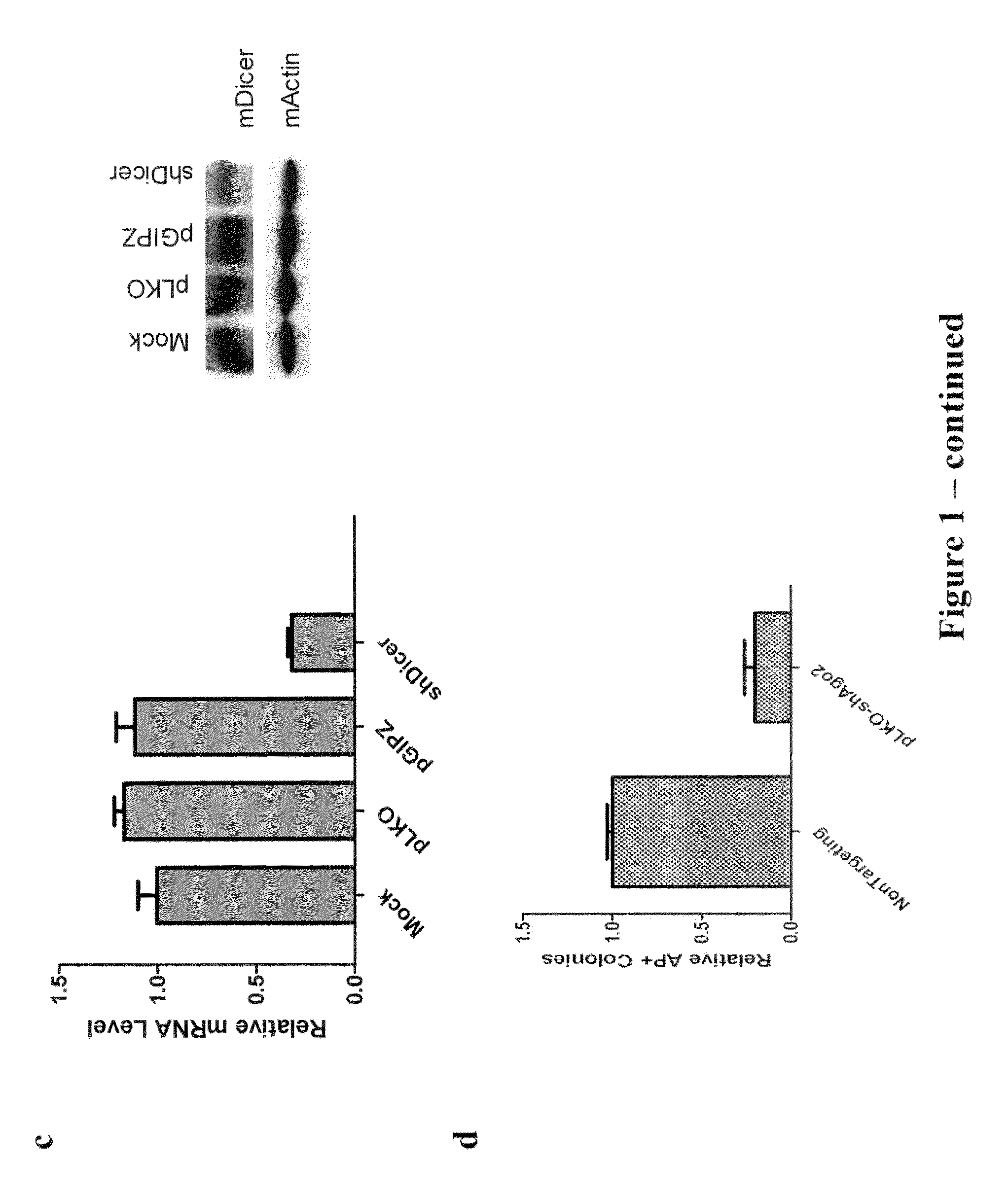Method for generation and regulation of ips cells and compositions thereof
a technology of ips cells and cell compositions, applied in the field of induced pluripotent stem cells, can solve the problems of significant decrease in reprogramming efficiency, and achieve the effects of avoiding immune rejection, increasing the number of cells, and preventing or reducing the number of cells
- Summary
- Abstract
- Description
- Claims
- Application Information
AI Technical Summary
Benefits of technology
Problems solved by technology
Method used
Image
Examples
example 1
Cell Culture, Vectors, and Virus Transduction
[0117]Oct4-GFP mouse embryonic fibroblasts (MEFs) are derived from mice carrying an IRES-EGFP fusion cassette downstream of the stop codon of pou5f1 (Jackson lab, Stock#008214) at D13.5. These MEFs are cultured in DMEM (Invitrogen, 11995-065) with 10% FBS (Invitrogen) plus glutamine and NEAA. For iPSC induction, only MEFs with passage of 0 to 4 are used.
[0118]The plasmids pMXs-Oct4, Sox2, Klf4 and cMyc are purchased from Addgene. The plasmid pMX-HA-p21 is generated by inserting N-terminal tagged-p21 into EcoRI site of pMX vector. The clones of pLKO-shRNAs are purchased from Open-Biosystems.
[0119]To generate retrovirus, PLAT-E cells are seeded in 10 cm plates, and 9 μg of each factors are transfected next day using Lipofectamine™ (Invitrogen, 18324-012) and PLUS™ (Invitrogen, 11514-015). Viruses are harvested and combined 2 days later. For iPSC induction, MEFs are seeded in 12-well plates and transduced with four factor virus the next day ...
example 2
Teratoma Formation, Chimera Generation, and Microarray Analysis
[0129]Teratoma formation and chimera generation are performed as follows: To generate teratomas, iPS cells are trypsinized and resuspended at a concentration of 1×107 cells / ml. Athymus nude mice are first anesthetized with Avertin, and then approximately 150 μl of the cell suspension is injected into each mouse. Mice are checked for tumors every week for 3-4 weeks. Tumors are harvested and fixed in zinc formalin solution for 24 hours at room temperature before paraffin embedding and H&E staining. To test the capacity of derived iPSC clones to contribute to chimeras, iPS cells are injected into C57BL / 6J-Tyr(C-2J) / J(albino) blastocysts. Generally, each blastocyst receives 12-18 iPS cells. ICR recipient females are used for embryo transfer. The donor iPS cells are either in agouti or black color.
[0130]mRNA microarray analysis is performed as follows: miR-93 and siControl are transfected into MEFs and total RNAs are harveste...
example 3
Post-Transcriptional Regulation Pathway Is Involved In Reprogramming Somatic Cells
[0133]The post-transcriptional regulation pathway was determined to be involved in reprogramming of MEFs to iPS cells. To investigate the role of post-transcriptional gene regulation during iPSC induction, lentiviral shRNA vectors targeting mouse Dicer, Drosha and Ago2 are used for stable knock-down in primary Oct4-GFP MEFs. Knock-down efficiency of these shRNA constructs is verified both by western and RT-qPCR (FIGS. 1a, 1b, and 1c). Approximately 70%-80% of mRNA level knock-down is routinely observed for each shRNA, as well as significant decreases in protein levels.
[0134]The shRNAs are then separately used to transduce MEFs along with viruses expressing the four factors OSKM (Oct4, Sox2, Klf4, and cMyc) at a volume ratio of 1:1:1:1:1. After 14 days, the colonies are fixed and stained for alkaline phosphatase (AP) activity, which is a widely used ES cell marker. AP+ colonies are quantified for each t...
PUM
| Property | Measurement | Unit |
|---|---|---|
| Efficiency | aaaaa | aaaaa |
Abstract
Description
Claims
Application Information
 Login to View More
Login to View More - R&D
- Intellectual Property
- Life Sciences
- Materials
- Tech Scout
- Unparalleled Data Quality
- Higher Quality Content
- 60% Fewer Hallucinations
Browse by: Latest US Patents, China's latest patents, Technical Efficacy Thesaurus, Application Domain, Technology Topic, Popular Technical Reports.
© 2025 PatSnap. All rights reserved.Legal|Privacy policy|Modern Slavery Act Transparency Statement|Sitemap|About US| Contact US: help@patsnap.com



